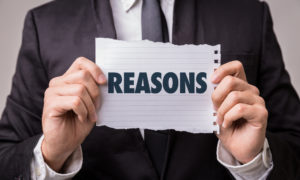
Asbestosis is a lung disease caused by inhaling asbestos fibers. Asbestos is a mineral that was once common in the construction of houses, apartments, and office buildings. It was a feature of insulation and of floor and ceiling tiles. Before its dangers were well-known, workers, particularly in the building and construction trades, frequently came into contact with asbestos on the job. Many of these workers later developed asbestosis and other lung conditions.
Asbestosis is dangerous because it can lead to pulmonary fibrosis (the scarring of lung tissue) and mesothelioma (a deadly lung cancer associated with asbestos exposure). It relates to medical malpractice in that your doctor has a professional duty to make an accurate and timely diagnosis when you present symptoms of asbestosis. An erroneous or delayed diagnosis can cause you to experience complications you otherwise could have avoided.
The Symptoms of Asbestosis
If you visited your doctor complaining of certain symptoms, your doctor should have recognized asbestosis as a possibility, especially if you worked in the construction trade before modern regulations limited workers’ exposure to the substance. A diligent doctor would know this information, as he or she would have taken your complete history and carefully reviewed it.
Here are the most common symptoms of asbestosis:
- Shortness of breath
- Persistent, dry cough
- Loss of appetite
- Weight loss
- Widening of the fingertips or toes (“clubbing”)
- Chest tightness or pain
If you presented one or more of these symptoms to your doctor, and he or she did not test for asbestosis despite your history of coming into contact with asbestos, this failure may constitute negligence.
Risk Factors for Developing Asbestosis
Even before you described your symptoms to your doctor, he or she should have asked about your medical and work history. This information can provide insight into the origins of a patient’s maladies.
In the case of asbestosis, the risk factors involve occupations. If your work history includes any of the following roles, your doctor should have been vigilant about screening for asbestosis:
- Asbestos mining
- Asbestos removal
- Aircraft and auto mechanic
- Boiler operation
- Construction work
- Electrical work
- Railroad work
- Shipyard work
If your doctor knew you worked in any of these positions and did not think to screen for asbestosis, or if he or she never bothered to ask about your work history when evaluating you, then his or her actions may have been negligent, giving you grounds to file a medical malpractice lawsuit.
For Help with a Medical Malpractice Case for Asbestosis, Call Newsome | Melton at 888-261-5614
The Newsome | Melton medical malpractice team can help you seek damages from your doctor for his or her failure to diagnose asbestosis. We offer a free consultation and work on a no-win-no-fee basis. To speak with a member of our staff today, call us at 888-261-5614.
Asbestosis - Frequently Asked Questions

Some patients with locked-in syndrome retain a sense of touch despite their global paralysis and inability to communicate verbally. Others, however, lose all sensory function in their torso and lower body. In incomplete injuries, patients may experience sensory losses on only half their body or otherwise retain only a partial sense of touch. When a
Read More
There are many common reasons why legitimate medical malpractice claims go unexplored. Every year, there are valid claims that people do not file, either by choice or for another reason. For help understanding if you have a valid medical malpractice claim, call the attorneys at Newsome | Melton at 1-855-MED-ASKS. Why Are Some Legitimate Claims Never
Read MoreAsbestosis - News Articles

In the beginning of 2008, Robert Jackson Miller III, an ivy-league graduate and successful architect based out of New York City, went to a dermatology appointment for a routine checkup. He had recently co-founded Miller & Wright Architects and his work had already been featured in Architectural Digest, the New York Times, and the Wall
Read More
Joan Simmons woke up on July 20, 2014 in unbearable pain. She was somehow able to get herself to the emergency room at St. Joseph’s/Chandler Hospital, located in Savannah, Georgia. Simmons, then 58, told the attending emergency room physicians that she had an intense pain coming from her back. According to court records, Simmons was
Read More